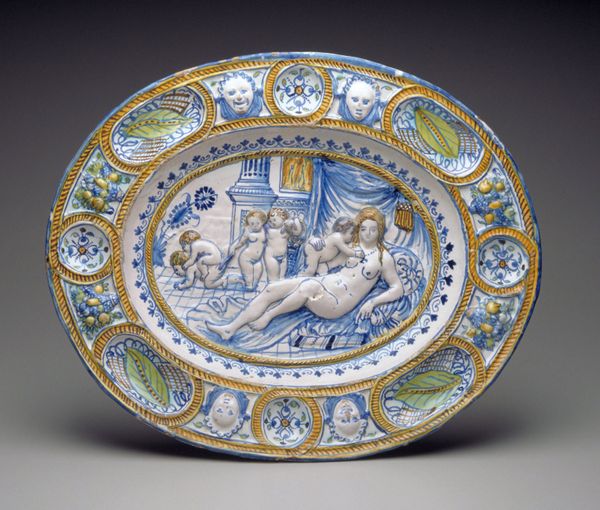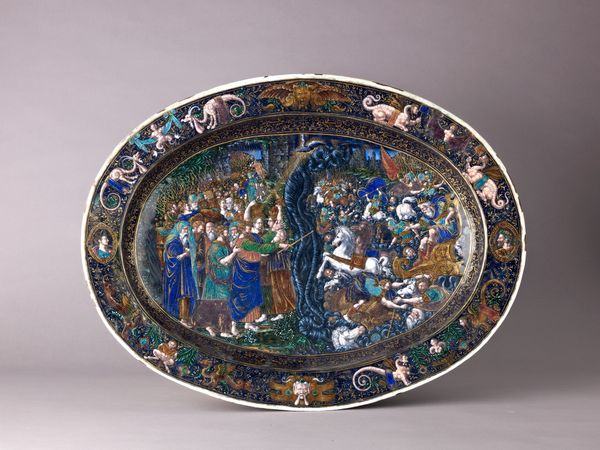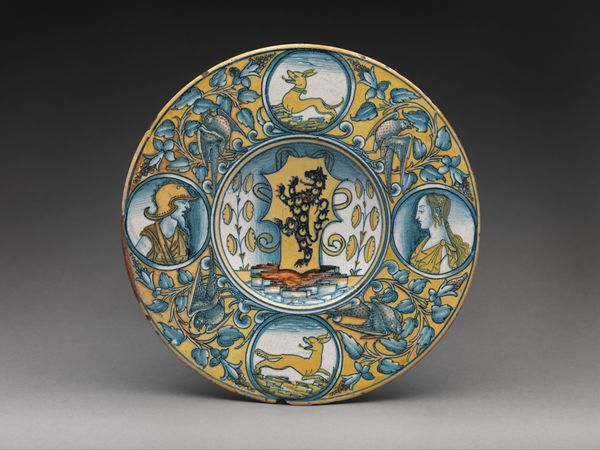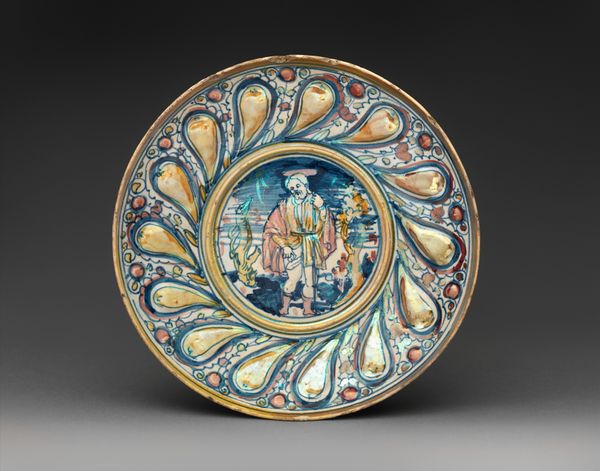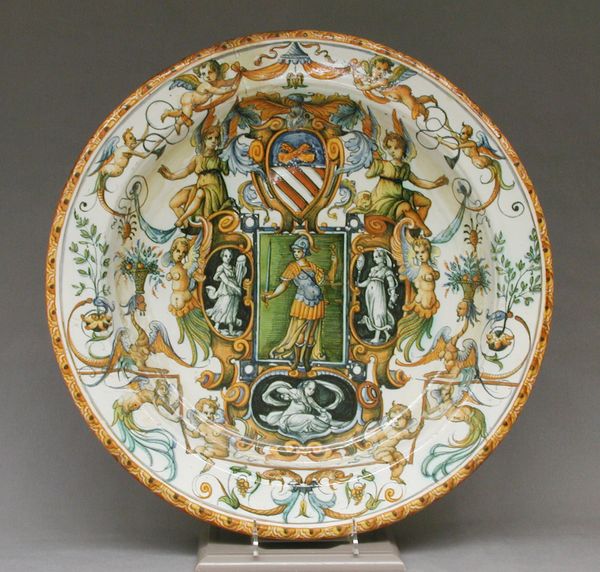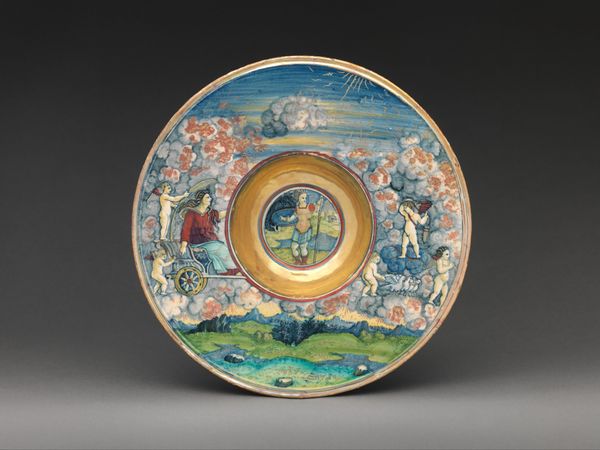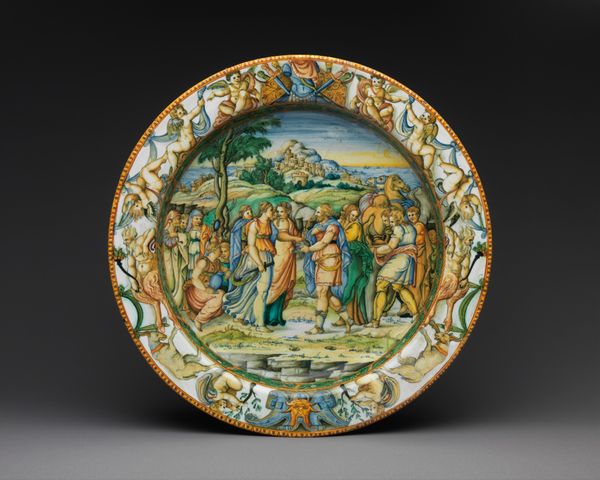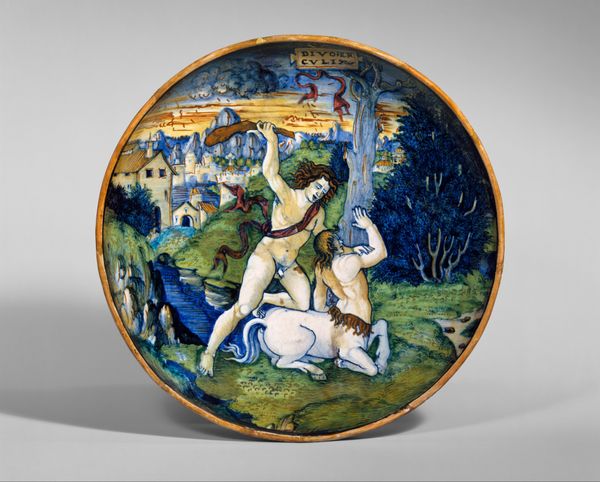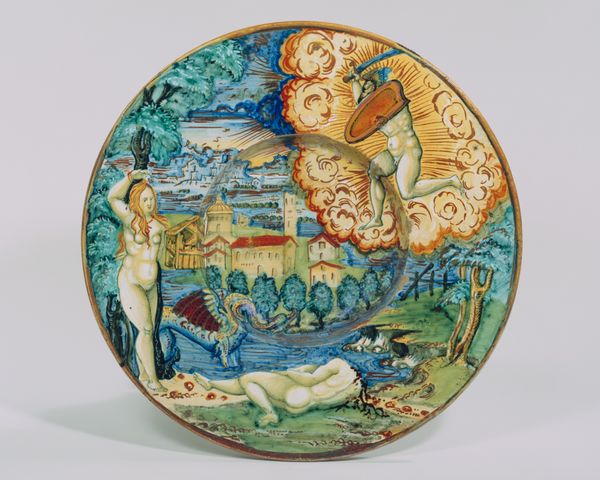
Dish (coppa): The story of Aeneas: Queen Dido of Carthage welcomes Aeneas and his son. 1517 - 1523
0:00
0:00
ceramic
#
decorative element
#
ceramic
#
figuration
#
ceramic
#
genre-painting
#
history-painting
#
decorative-art
#
italian-renaissance
#
decorative art
#
erotic-art
Dimensions: Diameter: 10 1/16 in. (25.5 cm)
Copyright: Public Domain
Curator: Here we have a magnificent Italian Renaissance dish, created between 1517 and 1523 by the workshop of Giovanni Maria Vasaro. It depicts a scene from the Aeneid: Queen Dido welcoming Aeneas to Carthage. The medium is ceramic, which feels almost paradoxical given the epic scope of the narrative. Editor: My first thought? Overwhelming! So much is crammed onto this single plate, it's as if they’re trying to encapsulate the entirety of Virgil's epic into a circular tableau. All those figures jostling, plus the incredibly intricate border. Curator: The border is fascinating, isn’t it? A riot of grotesque figures, leafy masks, and shields, all circling that central scene of courtly welcome. It's pure Mannerist exuberance, yet grounded by those vibrant blues, oranges, and yellows typical of the period. Do you see it as being more celebratory or symbolic of power, considering its decorative art positioning within a social setting? Editor: I'd argue it is definitely symbolic. Serving ware like this wasn’t mere decoration. Imagine the patron using this during an elite dinner: each glance reveals a reminder of classical heroism and their connection to those ideals of leadership and perhaps even, imperial ambition. Think about where this plate was viewed. The elite dinner attendee were constantly surrounded by such depictions of "nobility," constantly reminding the public the "glory days" of the era's old empire aspirations. Curator: Indeed! And consider the scene itself. Aeneas, fresh from the Trojan War, steps onto Carthaginian soil. Dido, regal and gracious, receives him. It’s a moment brimming with possibility, but also tinged with tragic irony. We know their love is doomed. I can almost sense this story played out in real life... as most often is. Do you agree with the placement and coloring on this piece being fitting for its time period, considering that erotic elements were commonly placed in high works of art during this movement. Editor: Absolutely, that tension, that premonition, it's all baked into the clay. The style, though visually arresting, could also reflect an underlying message about transient pleasures, and failed endeavors... How often are "welcome's" purely celebratory, or are simply masks of acceptance hiding ulterior motives and societal acceptance in general? Curator: A poignant note to end on. What starts as welcome is always met with time.
Comments
No comments
Be the first to comment and join the conversation on the ultimate creative platform.
